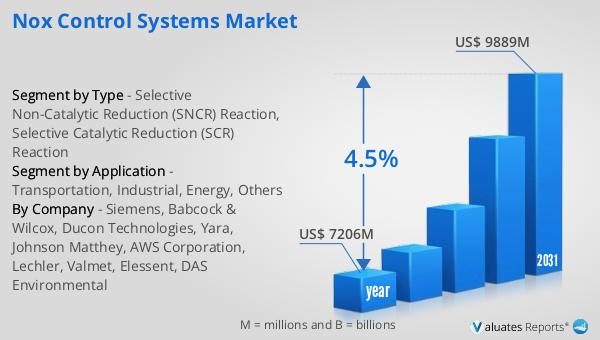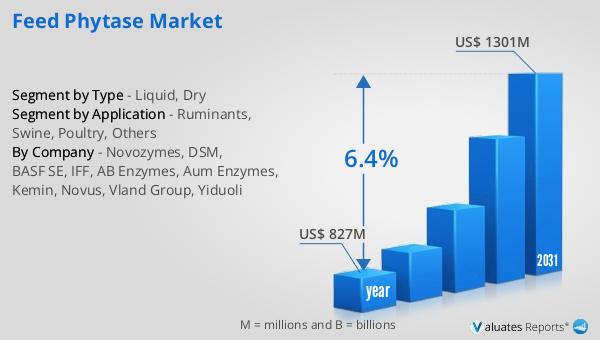What is Global NOx Control Systems Market?
The Global NOx Control Systems Market is a crucial segment in the environmental technology industry, focusing on reducing nitrogen oxides (NOx) emissions, which are harmful pollutants contributing to smog and acid rain. These systems are essential in various sectors, including transportation, industrial, and energy, where NOx emissions are prevalent. The market encompasses a range of technologies designed to control and reduce NOx emissions, such as Selective Catalytic Reduction (SCR) and Selective Non-Catalytic Reduction (SNCR). These technologies are implemented in vehicles, power plants, and manufacturing facilities to comply with stringent environmental regulations and improve air quality. The demand for NOx control systems is driven by increasing environmental awareness, regulatory pressures, and the need for sustainable industrial practices. As industries strive to minimize their environmental footprint, the adoption of advanced NOx control technologies is expected to grow, making this market a vital component of global efforts to combat air pollution and climate change.

Selective Non-Catalytic Reduction (SNCR) Reaction, Selective Catalytic Reduction (SCR) Reaction in the Global NOx Control Systems Market:
Selective Non-Catalytic Reduction (SNCR) and Selective Catalytic Reduction (SCR) are two prominent technologies used in the Global NOx Control Systems Market to mitigate nitrogen oxides emissions. SNCR is a process that involves injecting a reagent, such as ammonia or urea, into the combustion gases at high temperatures, typically between 850°C and 1100°C. This reaction reduces NOx to nitrogen and water without the need for a catalyst. SNCR is favored for its lower capital cost and simplicity, making it suitable for smaller installations or where space is limited. However, its effectiveness is generally lower than SCR, with NOx reduction efficiencies ranging from 30% to 70%. On the other hand, SCR involves the use of a catalyst to enhance the reaction between NOx and a reductant, usually ammonia, converting NOx into nitrogen and water. This process occurs at lower temperatures, typically between 200°C and 450°C, and offers higher NOx reduction efficiencies, often exceeding 90%. SCR systems are widely used in large-scale applications, such as power plants and industrial facilities, due to their superior performance and ability to meet stringent emission standards. The choice between SNCR and SCR depends on various factors, including the specific application, regulatory requirements, and cost considerations. Both technologies play a critical role in the global effort to reduce air pollution and improve air quality.
Transportation, Industrial, Energy, Others in the Global NOx Control Systems Market:
The Global NOx Control Systems Market finds extensive application across various sectors, including transportation, industrial, energy, and others. In the transportation sector, NOx control systems are crucial for reducing emissions from vehicles, particularly diesel engines, which are significant contributors to NOx pollution. Technologies such as SCR are commonly used in vehicles to meet stringent emission standards and improve fuel efficiency. In the industrial sector, NOx control systems are employed in manufacturing processes that involve combustion, such as cement production, steel manufacturing, and chemical processing. These systems help industries comply with environmental regulations and reduce their environmental impact. In the energy sector, power plants, especially those using fossil fuels, are major sources of NOx emissions. Implementing NOx control technologies, such as SCR and SNCR, in power plants is essential for reducing emissions and meeting regulatory requirements. Additionally, NOx control systems are used in other areas, such as waste incineration and marine applications, where NOx emissions are a concern. The widespread adoption of NOx control systems across these sectors highlights their importance in achieving sustainable development and protecting the environment.
Global NOx Control Systems Market Outlook:
The global market for NOx Control Systems was valued at approximately $7.2 billion in 2024 and is anticipated to expand to nearly $9.9 billion by 2031, reflecting a compound annual growth rate (CAGR) of 4.5% over the forecast period. This growth is driven by increasing regulatory pressures to reduce air pollution and the rising demand for cleaner technologies across various industries. As governments worldwide implement stricter emission standards, industries are compelled to adopt advanced NOx control systems to comply with these regulations and avoid penalties. The market's expansion is also supported by technological advancements that enhance the efficiency and cost-effectiveness of NOx control solutions. Furthermore, growing environmental awareness among consumers and businesses is fueling the demand for sustainable practices, further boosting the market. As a result, the Global NOx Control Systems Market is poised for significant growth, playing a vital role in global efforts to combat air pollution and promote environmental sustainability.
| Report Metric | Details |
| Report Name | NOx Control Systems Market |
| Accounted market size in year | US$ 7206 million |
| Forecasted market size in 2031 | US$ 9889 million |
| CAGR | 4.5% |
| Base Year | year |
| Forecasted years | 2025 - 2031 |
| Segment by Type |
|
| Segment by Application |
|
| Production by Region |
|
| Consumption by Region |
|
| By Company | Siemens, Babcock & Wilcox, Ducon Technologies, Yara, Johnson Matthey, AWS Corporation, Lechler, Valmet, Elessent, DAS Environmental |
| Forecast units | USD million in value |
| Report coverage | Revenue and volume forecast, company share, competitive landscape, growth factors and trends |
